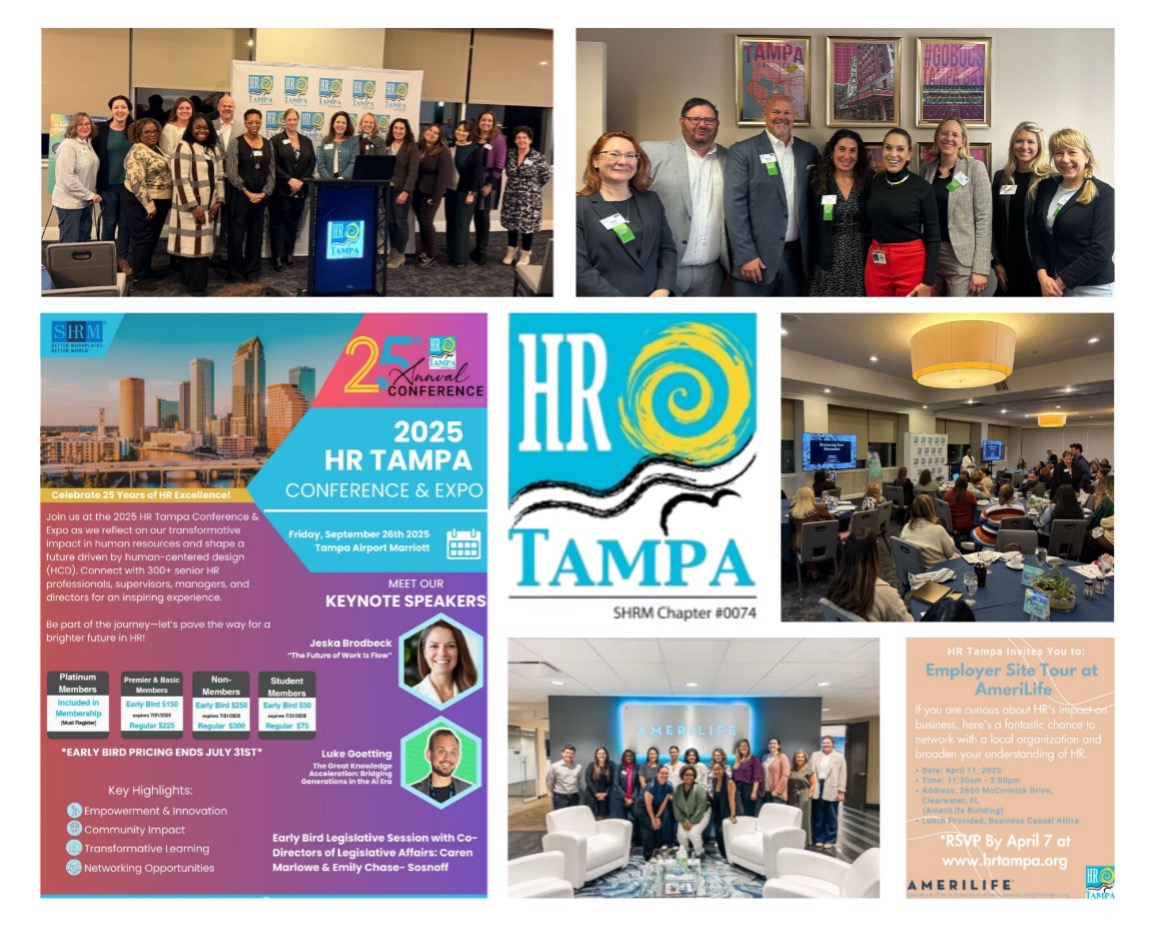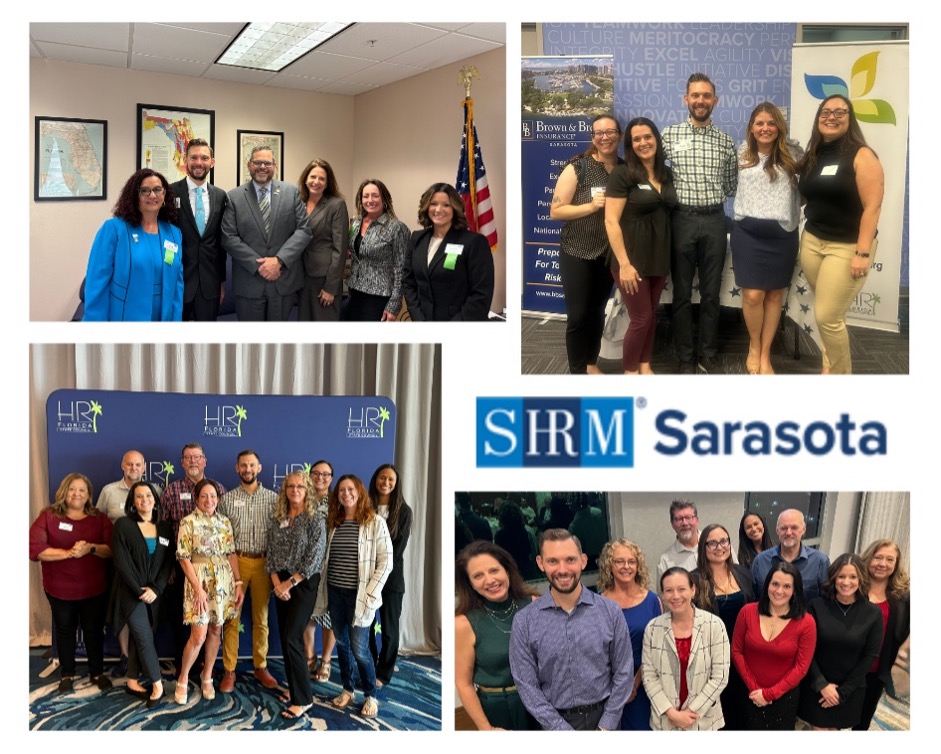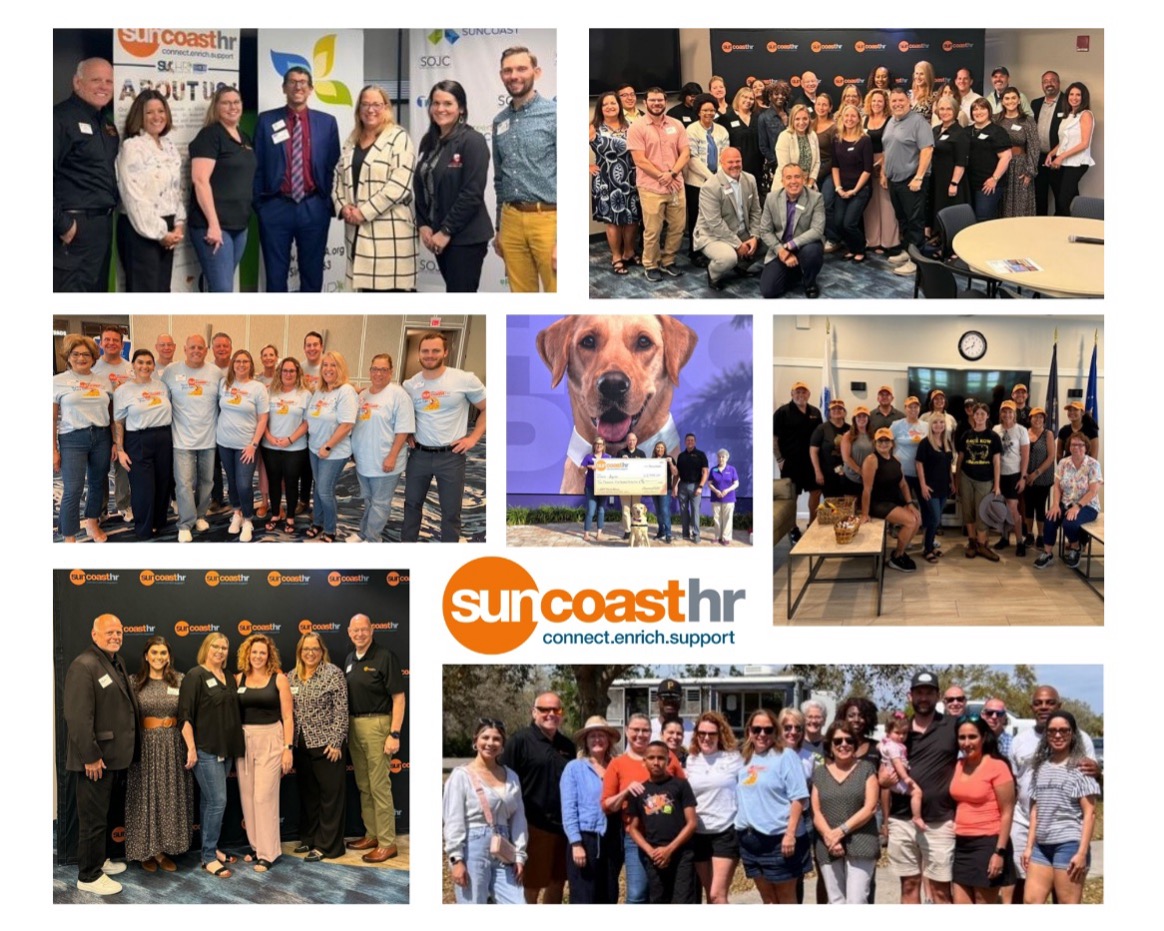Newswire
Newswire
By Amber J. Rees, SHRM-SCP, PHR
HR Tampa’s 2025 Year of Growth and Engagement
In the first half of 2025, HR Tampa has re-solidified its reputation as a catalyst for professional development and community leadership across the Tampa Bay region. Through innovative workshops, webinars, and certification programs, the chapter has addressed the evolving needs of today’s workforce, covering critical topics such as remote work management, employee well-being, and emerging HR technologies like artificial intelligence and data analytics. These initiatives empower members with the skills and knowledge to navigate a complex business landscape, fostering a vibrant, collaborative community of HR professionals committed to continuous learning and leadership. By elevating the HR profession, HR Tampa is making a tangible difference in shaping a more resilient and forward-thinking workforce across Tampa Bay.
Community Outreach and Social Impact
Beyond professional growth, HR Tampa has demonstrated unwavering dedication to strengthening community bonds and advancing social responsibility. The chapter’s mentorship programs—designed for both senior HR leaders and emerging professionals—serve as vital conduits for knowledge-sharing and leadership development. This year, HR Tampa partnered with Madi’s Movement to support youth aging out of foster care, helping young adults transition successfully into independence. These initiatives exemplify how HR professionals can be powerful agents of social change, leveraging their resources and influence to foster equity and opportunity within the Tampa community. The chapter’s ongoing commitment to social justice underscores its role as a professional organization and a force for positive community transformation.
Driving Inclusion for People & Culture in the Workplace
A central focus in 2025 has been advancing workplace inclusion and equitable environments. HR Tampa’s comprehensive training sessions, panel discussions, and collaborative projects have provided practical strategies for organizations to implement equitable hiring practices, support employee resource groups, and foster cultures of belonging. The chapter’s partnerships with local businesses and nonprofits further amplify awareness of social justice issues, inspiring a cultural shift toward acceptance and understanding. These efforts are helping to redefine Tampa Bay’s business landscape, demonstrating that embracing diversity is essential for innovation, resilience, and long-term success. HR Tampa’s leadership in this area is shaping a future where inclusivity is embedded at every level of the workforce.
Upcoming Conference & Expo
Building on these achievements, HR Tampa will host its 25th Annual Conference & Expo on September 26, 2025—National HR Professionals Day. Titled “The Human-Centric Revolution: Empowering Humanity for Positive Change through Connection and Community,” the event celebrates a legacy of transformative impact in HR. Attendees will explore how human-centered design principles reshape HR practices—from strategic innovation to meaningful employee engagement. The conference will feature industry leaders, vendors, and sponsors committed to advancing human-centric solutions, fostering connections, and shaping the future of work. This milestone event underscores HR Tampa’s ongoing dedication to empowering HR professionals to lead with empathy, purpose, and a shared commitment to community wellbeing. To register for our conference: https://www.hrtampaconference.org.

SHRM Sarasota: A Year of Bold Moves and Big Impact
SHRM Sarasota is celebrating an exciting and transformative year! In just six months, we have made significant strides—both within our chapter and throughout the community. Formerly known as the Sarasota-Manatee Human Resources Association (SHRA), we proudly rebranded to SHRM Sarasota to better align with the national SHRM brand and strengthen our identity within the HR profession.
With a legacy spanning more than 62 years, SHRM Sarasota has always been committed to giving back—and 2025 has been no exception. We have joined forces with organizations across Sarasota and Manatee Counties to support local job seekers and young professionals. This year’s efforts included visiting with our local State Representative William “Bill” Conerly in Tallahassee, volunteering at Sarasota County career events, the New College of Florida Talent Symposium, Children First’s Boys & Girls Resume Workshop, United Jobseekers, and the Young Professionals group. We also made a strategic shift by moving our annual conference to May—finally outsmarting hurricane season—and the results were phenomenal! Attendance was strong, our speakers delivered incredible content, and the energy was electric. As if that were not enough, we kicked off the event by earning the prestigious 2024 Gold SHRM Excel Award, a testament to the dedication of our board and volunteers.

SuncoastHR Celebrates 40 Years of Impact
This year marks an extraordinary milestone – SuncoastHR’s 40th anniversary. From our roots as a small group of dedicated HR professionals to the vibrant, thriving chapter we are today, we’ve spent four decades shaping the local HR landscape through connection, education, and service. We celebrated this legacy in style at our Annual Conference, Flourish, donning ruby red heels and sneakers in a nod to The Wizard of Oz – a reminder that each of us already has the power to lead, grow, and build meaningful careers. The energy, community, and inspiration throughout the year have been a powerful testament to why there’s truly no place like SuncoastHR.
In 2025, we proudly expanded the SuncoastHR Unite Initiative, a bold effort to strengthen collaboration across HR Florida District 7 and the Gulf Coast community. By partnering with HR Tampa, SHRM Sarasota, and local business leaders, we’ve created meaningful cross-chapter programming and real-world engagement. Unite brings together professionals, veterans, military spouses, and students through initiatives like #SuncoastHRChat, monthly in-person and/or virtual networking events co-hosted with HR Tampa’s #HRInspire and SHRM Sarasota. Each of our chapter meetings also features a Military Moments spotlight, honoring local organizations that support our military community – underscoring our commitment to unity, inclusion, and service.
Equally impactful, our Charity Partner Initiative brought heartfelt service to the forefront of our mission. We began the year raising awareness with Habitat for Humanity, followed by a donation of $2,545.60 to our 2024 legacy partner, Dogs Inc., including an in-person site visit to connect more deeply with their mission. For HEP (Homeless Empowerment Program), we contributed $1,150 and participated in hands-on volunteering in their community garden, directly supporting their efforts to serve homeless individuals and veterans. In June, we launched a summer partnership with Top Buttons – St. Pete, collecting professional clothing and raising a remarkable $613.25 in a single meeting to help young women in at-risk circumstances. We also raised $2,810 for the SHRM Foundation at our Annual Conference – demonstrating that when it comes to giving back, SuncoastHR leads with heart and purpose. Adding to these achievements, SuncoastHR was honored with the prestigious 2024 Platinum SHRM Excel Award. This esteemed recognition stands as a powerful testament to the unwavering dedication and tireless efforts of our board members and volunteers, whose commitment has been instrumental in our chapter’s success and impact.
